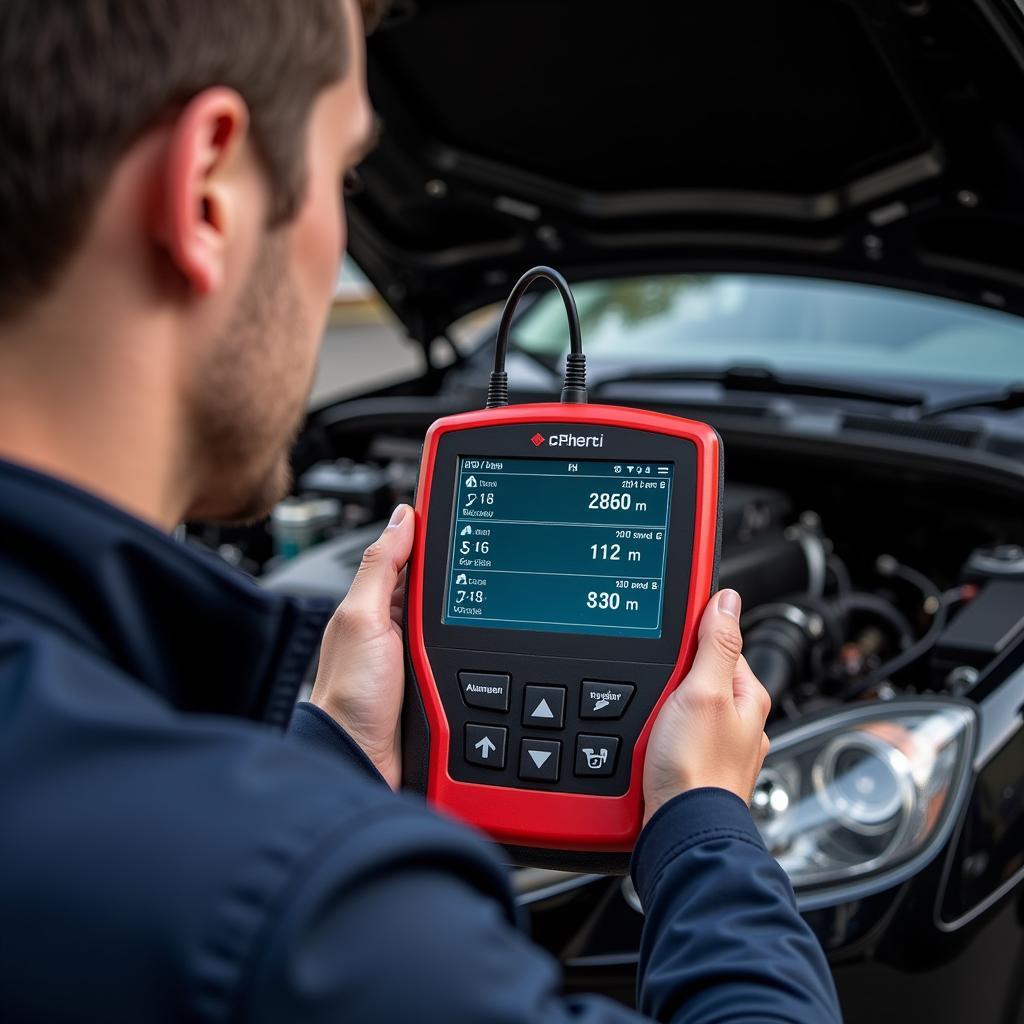Engine Scan Tools have revolutionized automotive diagnostics and repair. From simple code readers to advanced professional-grade systems, these tools empower car owners, mechanics, and technicians to quickly and accurately identify issues, saving time and money. Understanding how to effectively use these tools is crucial for anyone involved in automotive maintenance and repair. Find the perfect affordable car code scanner to suit your needs.
Choosing the Right Engine Scan Tool
Selecting the right engine scan tool can be daunting given the variety available. Consider your needs and budget. A basic code reader might suffice for a car owner wanting to check engine codes, while a professional technician needs a more sophisticated tool with advanced features like live data streaming, bi-directional controls, and special functions. Do you need a tool for a specific make and model? Some scan tools are designed for particular vehicle brands and offer more in-depth diagnostic capabilities.
Choosing the right engine scan tool is paramount. For instance, if you’re in the UK, the bluedriver obd2 scan tool uk could be an excellent choice due to its compatibility and features specifically tailored for the UK market. Furthermore, understanding the software interface is important. User-friendly software with clear navigation and comprehensive data presentation is essential for efficient diagnostics.
Understanding OBD-II and Diagnostic Trouble Codes (DTCs)
OBD-II, or On-Board Diagnostics II, is a standardized system that allows engine scan tools to communicate with a vehicle’s computer. This system monitors various engine parameters and sets Diagnostic Trouble Codes (DTCs) when a problem is detected. These codes are the starting point for diagnosing any engine issue. Understanding how to interpret these codes and the associated freeze frame data is key to accurate diagnosis.
What information do DTCs provide? DTCs are alphanumeric codes that pinpoint the specific system or component where a fault has occurred. They do not directly tell you what is broken, but rather guide you towards the area of the problem. Further investigation is always required.
Using an Engine Scan Tool: A Step-by-Step Guide
- Locate the OBD-II port: Typically found under the dashboard on the driver’s side.
- Connect the scan tool: Plug the scan tool into the OBD-II port.
- Turn the ignition on: Do not start the engine.
- Follow the scan tool’s prompts: Each scan tool has its own interface, but the basic steps are similar. Select the option to read codes.
- Retrieve the DTCs: The scan tool will display any stored DTCs.
- Interpret the codes: Use a reliable source to look up the meaning of the codes.
- Clear the codes: After troubleshooting and repairs, clear the codes using the scan tool.
Understanding network scanning is also beneficial for certain diagnostic procedures. Resources like wireless network scanning tools netstumbler can offer insights into how different systems communicate within a vehicle.
 Mechanic Using an Engine Scan Tool
Mechanic Using an Engine Scan Tool
Beyond Basic Code Reading: Advanced Features
Many engine scan tools offer advanced features beyond basic code reading. Live data streaming allows you to observe real-time sensor data, providing valuable insights into engine performance. Bi-directional controls enable you to activate various components, such as fuel injectors or solenoids, for testing purposes. Special functions, like ABS bleeding or key programming, are available on some higher-end scan tools.
Why Are Engine Scan Tools Important?
Engine scan tools are indispensable for efficient and accurate automotive diagnostics. They minimize guesswork, saving you time and money. Early problem detection can prevent costly repairs down the line.
“Investing in a reliable engine scan tool is a wise decision for any car owner or mechanic,” says automotive expert John Smith, ASE Certified Master Technician. “The ability to quickly pinpoint problems can save you significant time and money in the long run.”
Some scan tools are designed for specific vehicles. For example, a scaner tool for 1992 corvette will offer more targeted diagnostics for that specific model. Even for seemingly simple tasks, having the correct tool makes all the difference. Consider the ubuntu default scanning tools for their specific applications.
Conclusion
Engine scan tools are an essential tool for anyone involved in automotive repair or maintenance. Choosing the right tool and understanding how to use it effectively can significantly improve your diagnostic capabilities and save you time and money. From simple code readers to advanced professional systems, engine scan tools empower users to tackle automotive issues with confidence and precision. Need help? Contact ScanToolUS at +1 (641) 206-8880 or visit our office at 1615 S Laramie Ave, Cicero, IL 60804, USA. We’re here to assist you with all your automotive diagnostic needs.
